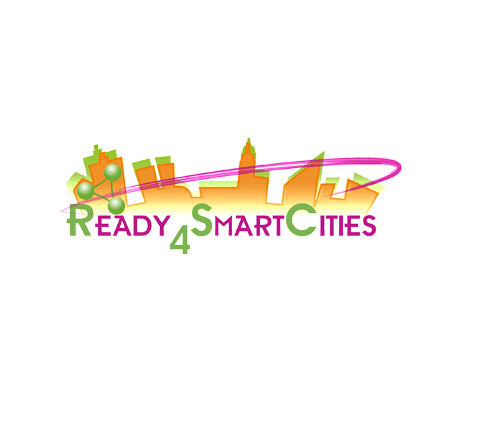One of the objectives of READY4SmartCities project is to suggest development needs for energy systems of smart cities and especially on how ICT is enabling and supporting it.
The road map is developed with a top-down approach, starting from setting up the framework and the main scope in Deliverable 5.1 Conceptual framework & methodology, and the main vision of the road map in Deliverable 5.2 Vision of Energy Systems for Smart Cities. The draft road map will be presented in Deliverable 5.3 Draft of Innovation and research roadmap and the final version D5.6 Innovation and Research Roadmap will be available in September 2015. Moreover, Deliverable D5.4 Implementation Recommendations for the roadmap will be suggested in the spring 2015; and impact assessment of the roadmap in summer 2015.
The vision
R4SC vision envisages future scenarios and development for smart energy systems based on identified links between different energy systems and interconnection needs and possibilities to broader smart energy networks. The vision and its four main levels (citizens, building and energy sectors and municipality) are visualised in Figure 1.
The project vision is that efficient energy use and sustainable energy supply are included in the cities targets and realised in their planning, decision making, daily operation and development projects. Efficient energy use and supply are strongly linked and integrated to other operations and actions by municipalities by various ICT solutions. Municipalities foster the integration of different city systems to maximise their synergy impacts. Even with these future goals, the current reality is that often municipalities have difficulties to estimate the profitability and other benefits of investments, and they also have difficulties to make long term budget commitments in order to achieve life cycle optimum. Also this challenge can be supported by ICTs.
In addition, the vision aims to increase citizens involvement and their active role in the daily operation, use and decision making related to energy aspects. On the building side, among others the Energy performance of Buildings Directive adopted by EC drives buildings to become (nearly) zero energy buildings that are actually active prosumers that both use energy efficiently, and also produce renewable energy on-site. In the road map the vision is that energy positive buildings are connected objects that are optimised to balance their energy behaviour to maximise the comfort of inhabitant and to act as energy provider when required by external actors of the energy systems. This again requires among others the smart use of data, which means data acquisition, data storage, and data processing from the building environment but also from other domains (energy grids, transportation systems, weather and urban activities at large). This implies that interoperability is ensured at different levels (physical level: the sensors, actuators, and acquisition systems are connected together, and communication protocols, data structures and semantics are shared).
The energy sector vision and road map is developed based on the expectations for increasing share of volatile renewables in the energy market, and with an increasing amount of renewable energy production within the city. At the same time, there is a need for local regulation of energy saving which e.g., leads more and more to the introduction of smart metering techniques. Furthermore there exists a drive to put off long term investments in energy infrastructure as long as possible by resorting to ICT based technologies. All this requires ICT standards for communication for all systems in the energy market and regulations enforcing those standards taking into account flexible energy markets. Additional ICT solutions are needed for cities that are developing and starting to act as a large multi-source power plant and virtual storage, being able to produce most of the energy needed by distributed renewable sources within the city itself, while being able to react flexibly also on the availability of volatile renewables to enable their large scale generation also outside the city. As a consequence, optimised and flexible thermal distribution, production and the increasing of energy efficiency of systems and interacting with the electrical grid will bring mutual benefits.
The road map
READY4Smartcities project produces a road map suggesting research and technical development and innovation activities in short, medium and long term development and innovation of ICTs for holistic design, planning and operation of energy systems in smart cities. In addition, synergies with other ICT systems for smart cities are considered.
The road map is structured in to four main domain area roadmaps and one integrating section related to energy data and its usage. The domain areas are: citizens, building sector, energy sector and municipality level. Each road map section introduces relevant drivers, needs and requirements, vision, barriers, expected impacts and key stakeholders. Each sector has their own RTD and innovation focus topics, with descriptions of the general background, state of the art, and suggested RTD and innovation needs identified in short, medium and long term.
The repeating theme throughout the road map is a strong need for broad collaboration, communication and interoperability within various stakeholder networks. This requires standardisation (both for interfaces and systems themselves) to enable cross-organisational operation. Also the role of open energy data and its utilisation is included here.
The roadmapping work is an iterative process. The preliminary draft of the roadmap is publicly available, and will be used as the base for collecting experts’ and stakeholders’ feedback, further ideas and development needs. The road mapping work continues until September 2015, when the final version will be published.
